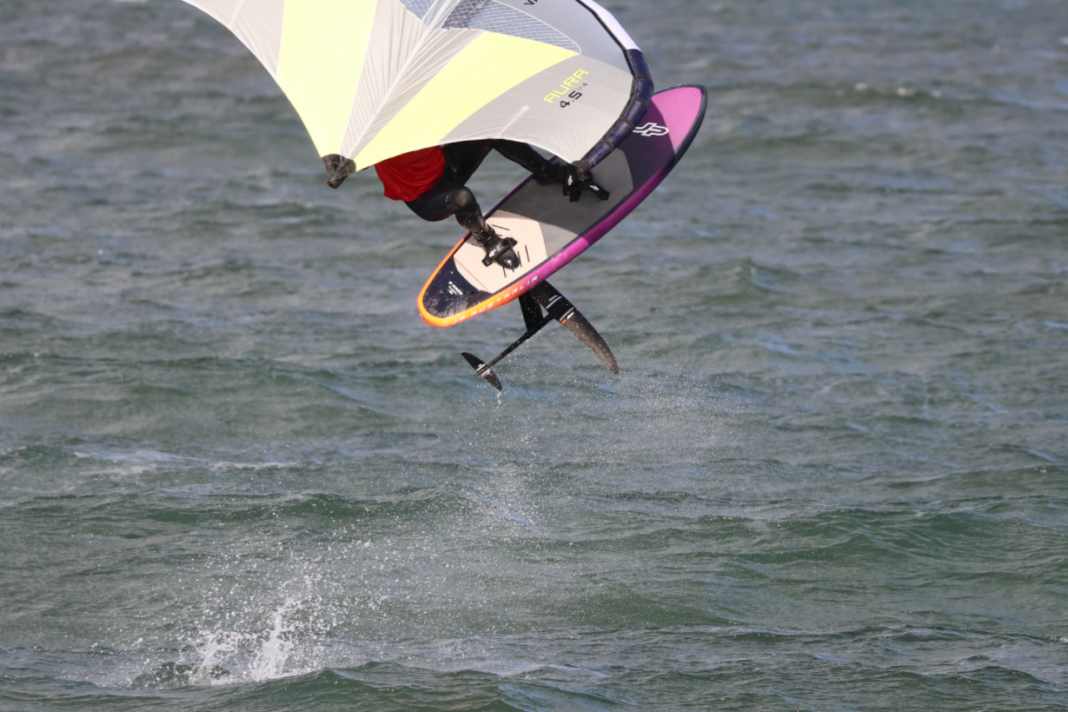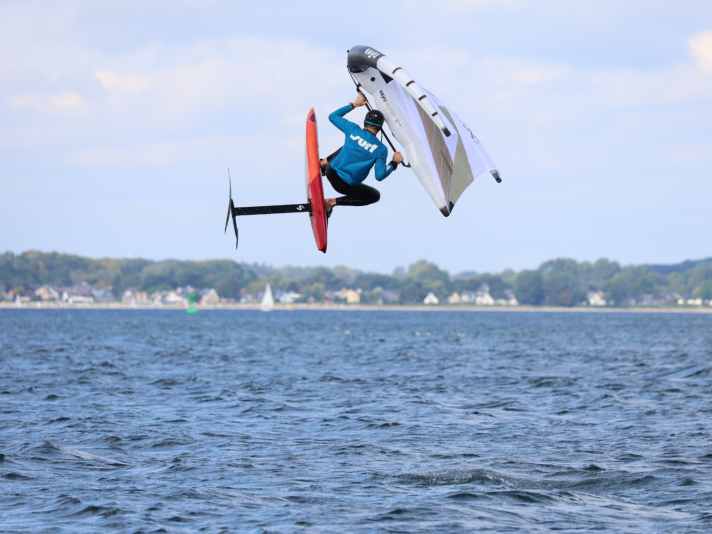





The Flow Foil from Slingshot is available in three sizes with a surface area of 600/800 and 1000 square centimetres. With a high aspect ratio of 11.0 and a slim profile, it should score points with maximum glide and high efficiency, especially for downwind runs.
On land
We have already reported in detail on the One-Lock system, which allows assembly completely without screws. The front wing and the front part of the fuselage are inserted into the mount on the mast. Once the stabiliser has been inserted with the rear part of the fuselage, the parts are pressed together using a quick release. Provided you have set the correct tension on the quick release, this system also works very reliably and ensures that the components are firmly secured. The One-Lock system can be combined with both aluminium and carbon masts (+€680) - we show you how it works in the following video test:
On the water
We tested the Flow 1000 Frontwing in combination with the Turbo 180 and the Flare 175 Stabiliser. Both combinations offer low resistance on start-up, so that pumping turns are converted into speed very well. It is important to build up speed before taking off and ideally even delay the wing's climb for a short time. Otherwise, if you take off too early, the Slingshot Flow Foil will always sag again. The take-off therefore needs to be a little more sensitive than with the Sister models Glide and Ease Once lifted off, the wing offers a stable inflow and a good speed level.

Due to its generous wingspan of around 105 centimetres, the wing is somewhat more challenging to control in combination with very narrow boards, especially in manoeuvres. In combination with a board equipped with Midlength- or compact wingboards, the wing is easy to control, especially in combination with the Turbo 180 Stabiliser, which makes the handling even easier. With the Flare 175, which sits on a shorter fuse, the foil becomes even more agile in turns, but also more demanding. The foil turns noticeably smoothly with both stabilisers in manoeuvres such as tacking, jibes and foil 360s, and it suits wide and medium radii much better than tight hooks. The foil is in its element when downwinding, where it is able to utilise the energy of waist-high swells efficiently. It is less perfect for jumping - although it offers the necessary speed potential, a more compact wing like the Glide is much better suited for tricks and rotations in this size.

Slingshot Flow 1000 One-Lock Foil - the conclusion
The Slingshot Flow 1000 wing is particularly suitable for experienced wingfoilers who are primarily looking for a foil for downwinding - this is where the wing scores across the board. The characteristics at the start make life a little more difficult for absolute beginners - if you are looking for easy take-off and relaxed manoeuvres, it is better to use the Ease or Glide front wing. If jumps and first freestyle rotations are on your wish list, you should also clearly orientate yourself towards the glide front wing within the Slingshot range, which is also better suited for tighter, smoother turns when the waves have more thrust.
Glide, mounting system
Take-off behaviour
-
Slingshot Flow 1000 One-Lock - technical data
- Test product: Slingshot Flow One-Lock 1000
- Front wing area: 1000 cm2
- Front wing span: 104.9 cm (aspect ratio 11.0)
- Back wing area (Turbo 180): 180 cm2
- Wingspan back wing: 34 cm
- Fuselage: Total length 66 cm
- Mast (aluminium): 82 cm
- Price test set: 1613 Euro
- Weight set (own measurement): 3.43 kg
- Scope of delivery: Cover; 3 mounting systems for mast
- Special features: Assembly possible without tools
- Info: To the website
